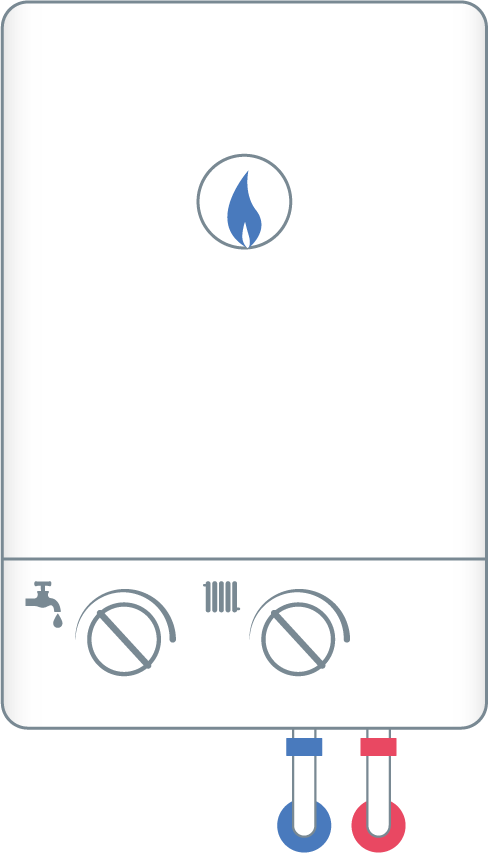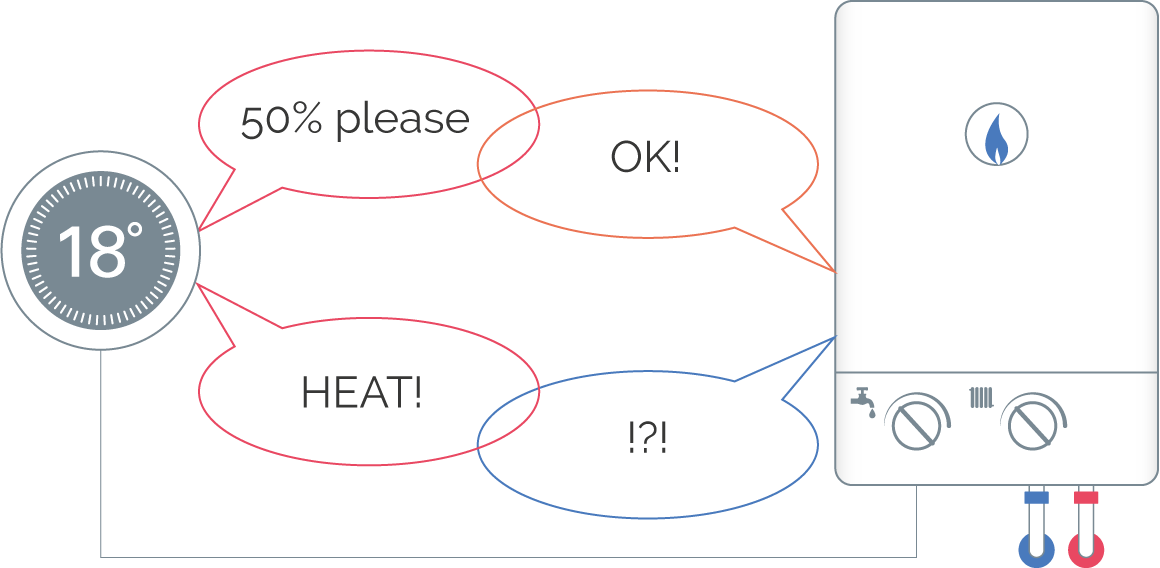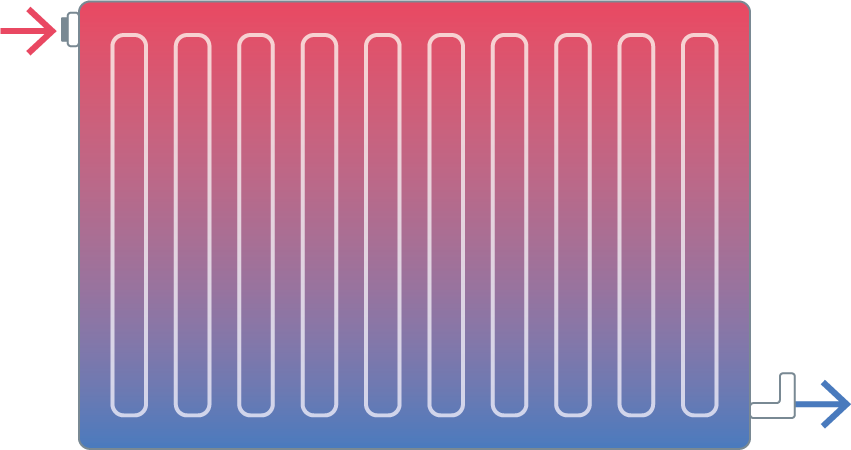There are things we can do now to help reduce our carbon emissions from the millions of existing boilers and reduce our fuel bills.
Sooner or later we will stop burning fossil natural gas to heat our homes and hot water. How we will be heating our homes in the future is still uncertain, probably with electric heat pumps, maybe with hydrogen boilers, or even a hybrid combination.
The options are confusing but the good news is there are things we can do now that will help reduce our carbon emissions from the millions of boilers and reduce our fuel bills. The even better news is that getting the most out of your boiler will help us with future heating systems too.

Firstly, imagine the link between thermostat and boiler, which we can also think of as the bridge of a ship and the engine room. In the classic case the thermostat simply tells the boiler to fire up, not how hard to work, like the Captain of the ship ordering ‘Go!’ rather than giving the speed and direction to head. Faced with this ambiguous signal the boiler does the best it can and aims to heat the water going to the radiators to the temperature often set in its own control, and because it knows you are cold, it tries to do this as quickly as possible. Mostly, this is a safe and sensible strategy, but if radiator valves are closed or the internal temperature is already close to what you want, then the boiler may heat up too fast unable to give all the heat to the house and decide the best option is to switch off before components are damaged. Boiler safety systems prevent the situation getting out of control but the resultant boiler cycling on and off can seem confusing. Sadly for us, and our pockets, cycling the boiler is not good news for its efficiency. So, updating your heating control to a ‘load compensation’ or ‘weather compensation’ would be beneficial . These types of controls, rather than sending a simple ON or OFF signal to the boiler, can interpret the difference in actual room temperature and the temperature you want (and in the case of weather compensation, the outside temperature) into a signal to the boiler of how hard to work. With this more meaningful communication, the Captain and engine room can pilot the ship from harbour out to sea and the boiler can heat the house appropriately under all conditions.

However, most combination boilers are too powerful for the homes they are in (Bennett et al. 2018), which means that although modern controls can ask for a low level of heat, the boiler may be incapable of modulating that low to oblige, again resulting in inefficient cycling, but certainly less than with an old simple thermostat.
Boilers work hard for us, typically boilers run thousands of hours a year, by comparison you may only drive your car a few hundred hours. So, it is not surprising that boilers need some TLC to keep running reliably and efficiently. Corrosion products can slowly block the primary heat exchanger where the gas is burnt, this will lower the efficiency and power of the boiler over time, but cleaning and maintenance can prolong the life and efficiency of a boiler.
Producing heat in the boiler by burning gas efficiently is critical to keeping our emissions and costs low. Besides the cycling and blocking described, the temperature of the water in the radiators is crucial to high efficiency boiler operation. This depends on the boiler but more so on the way that heat is distributed around the radiators. Hydraulic balancing of radiators is the key process to optimise and it involves the radiator being tuned via its valves to ‘balance’ the flow of warm water across all the radiators in the system. This simple process is key for two reasons, it ensures all rooms warm equally and that the temperature of the water returning from the radiators to the boiler is low.
Many central heating systems are not balanced, which can leave rooms cold and low boiler efficiency. If your radiators are the same temperature all over, then chances are your system is not balanced. Ideally, the temperature should drop from the inlet to the outlet (top to bottom normally), which may seem odd, but your boiler will thank you for it and repay you with higher efficiency.

Efficiency can be further enhanced by running the whole system at a lower temperature, set at the boiler itself. With your current central heating system there will be a limit below which you won’t want to reduce the radiator temperature any lower (the heat it gives off is proportional to the temperature) but installing bigger radiators as part of redecoration can be a wise move to keeping the temperature low and the efficiency high.
Crucially, we need to consider when our boilers come to the end of their lives (typically 15 years) that although we can optimise their use, ultimately, they still burn gas and produce CO2. So, planning for a heating system without a natural gas boiler is important to avoid rushing into another boiler when your current one gives up the ghost.
See also the first part in the series, how your boiler misbehaves.
The third and final part of this blog series will follow.
Banner photo credit: He Gong on Unsplash



